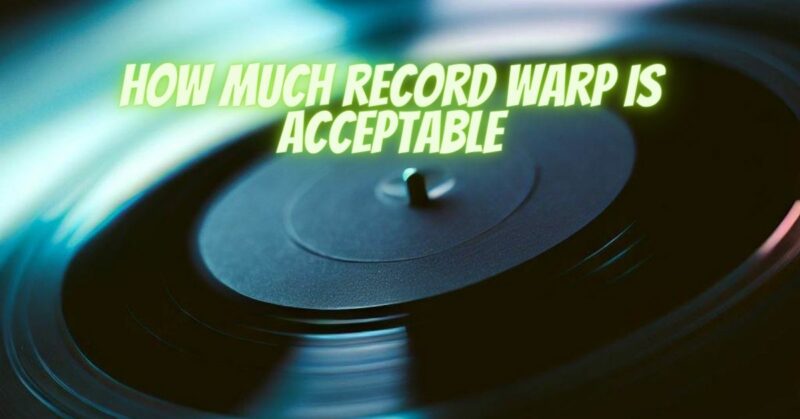Vinyl records have a timeless appeal, cherished by music enthusiasts for their warm sound and tactile charm. However, due to their delicate nature, vinyl records are susceptible to warping, which can affect their playback quality. In this article, we will explore the concept of record warping, how it occurs, and the degree of warp that is considered acceptable for optimal playback.
Understanding Vinyl Record Warping:
Record warping refers to the physical deformation of a vinyl record’s surface, causing it to deviate from its original flat shape. Warping typically occurs due to exposure to heat, improper storage, or the weight of stacked records over time. Common types of warps include:
- Edge Warp: The record’s outer edge rises or lowers, causing it to wobble during playback.
- Dish Warp: The record’s center sinks, causing it to appear concave.
- Melt Warp: Occurs due to exposure to high heat, causing the record to soften and warp.
The Degree of Acceptable Warp:
The acceptability of record warp can vary based on personal preferences and the degree of playback tolerance. Some collectors may be more lenient with minor warping, while others may expect their records to be perfectly flat for optimal playback.
- Minor Warp: Slight warping that does not significantly affect the record’s playability may be considered acceptable to some collectors. A minor warp might cause a slight wobble during playback but does not produce audible disruptions.
- Moderate Warp: A moderate warp may cause more noticeable playback issues, such as skipping or tracking problems. While some enthusiasts may tolerate a moderate warp, others may find it distracting and prefer records to be flatter for better sound quality.
- Severe Warp: Severe warping, where the record is significantly distorted and causes significant playback problems, is generally not acceptable to most collectors. A severely warped record may produce audible distortions, skips, or jumps during playback.
Playability and Sound Quality:
Ultimately, the acceptability of record warp is closely linked to playability and sound quality. A slightly warped record that still plays without major issues and does not significantly affect sound quality may be deemed acceptable by many collectors. However, records with severe warping that hinders playback or causes audible distortions are generally considered unacceptable.
Preventing Record Warping:
To prevent record warping, follow these guidelines:
- Proper Storage: Store records vertically and avoid stacking them, as the weight of multiple records can contribute to warping over time.
- Temperature Control: Store records in a cool, dry environment away from direct sunlight and heat sources.
- Record Support: Use high-quality outer sleeves and inner sleeves to provide proper support and protection for records.
The acceptability of record warp depends on individual preferences, playback tolerance, and the extent of the warp’s impact on playability and sound quality. Minor warping may be considered acceptable by some collectors, while severe warping that affects playback is generally deemed unacceptable.
By taking proper care of your vinyl records and storing them in a suitable environment, you can minimize the risk of warping and ensure a satisfying listening experience with your treasured vinyl collection.


